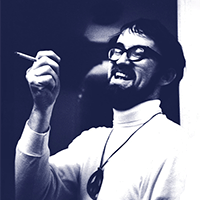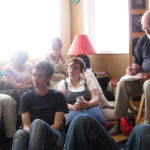2) WHAT: What kind of organization do you need?
“That is the job of the organizer: to build an organization.” – Organizer’s Notebook on Public Utilities and Energy, 1976
As quiet as it’s kept, Dan Leahy was the engine behind one of the most concerted attempts to start a third party in this country. The Citizens Party was a grassroots effort fueled by some DC big money to organize a progressive opposition to the dominant two-party system.
Dan was hired in May 1979 to build the apparatus of a new political party. For Dan that meant building an organizing strategy that would grow local and regional chapters in every state and start running people to create a track record. He created the engine to do that, researched the ballot laws in every state, got the signatures in local areas, hired staff, and even found ways to subsidize organizations that could loan staff to the effort.
Though the original purpose and goals were aligned to wrestle the economy back from the corporations with a people’s agenda, to stop nuclear power, and to break the two-party monopoly, they were far from agreeing on how to do that. The big money wanted to run a presidential candidate. The organizers wanted to build a movement with a party that could represent it.
Dan served as National Secretary, National Executive Director, and on the National Executive Committee from May 1979-February 1981. In that time, he led the efforts to organize 4,000 paid members in 33 state caucuses. 300 delegates converged on Cleveland for the founding convention, and as the Citizens Party, approved a platform and gained recognition from the Federal Election Commission as a national political party. The memos, working papers, and detailed meeting notes of building an Executive Committee, a broader representational Citizens Committee, and a voting membership are all bindered in his basement and tell the story that no other summary of this episode seems to capture (including a chapter in a book by Stanley Weiss’s chapter and a summary in Third Parties in America). What gets missed and under-reported is the work of organizing to build a shape for people to join and lead, and the people who build that shape.
Big money and desire for individual fame overpowered the debate and undermined the organizing. The financial backers ran their man in the national presidential election. The campaign failed miserably at the polls with only 221,000 votes in 31 states.
Dan wrote his evaluative memo from Wenatchee, Washington: “I don’t know whether the remnants of The Citizens Party can become a national political force or not, but the lesson is clear. A new political party must be built from the ground up, developing its leaders and ideas, relying on its own resources and community history. There are no shortcuts to progress under democracy.”
In answering the question about what kind of organization to build, Dan’s approach is a combination of systematic planning and relationship building. He builds a “container” – a timeline, the committee has assignments, and each state or region or territory or group is included. Responses are tracked and follow-up is comprehensive.
But it’s not like a machine. The responses are based on true political will. In the case of the Citizens Party, people were organized when they aligned to the statement of principles and the goal to build a strong people’s party in the United States to disrupt the two-party corruption and exploitation. There has to be will and excitement about the project. Dan also applied lessons from his previous endeavors. Even in this national formation, Dan took on the organizing of the terrain he knew best – the west and specifically, the Northwest.
And he did build the organization. But the opposition to a movement building process showed up from multiple directions, and those lessons informed his next phases. “The function of the Democratic Party is to stop movement,” he reminded me often. And remember: never do something just because there’s money attached. The power of money and fame wanting a quick, national win compromised the longer movement building process of the Citizens Party that required systematic work and belief in the people who would carry it forward.
He went back to Washington.
Return to Framework for Organizing
Continue to WHO: Who will be a part of it?



